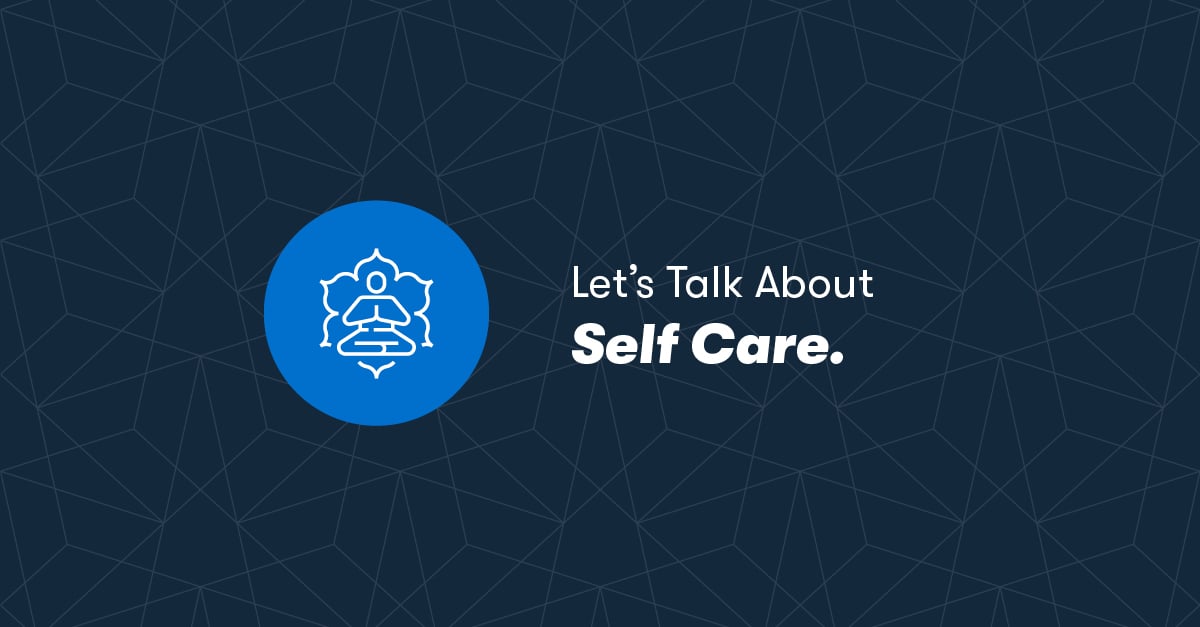What is self-care?
Self-care is the intentional actions we take to boost our mental, physical and emotional well-being.
By that definition alone, self-care can mean a lot of different things, including nutrition, lifestyle, hygiene and preventive health.
It’s easy to get caught up in the idea that to take care of ourselves, we need expensive products and extra hours in the day, especially if you follow celebrities and influencers on social media who regularly post about their self-care routines. But there are many ways to practice self-care that won’t cost you a dime and offer significant physical and emotional health benefits.
Is self-care just a trend or here to stay?
Taking care of yourself isn’t a new concept. But since the pandemic took such a toll on Americans’ mental and emotional well-being, practicing self-care emerged as a positive response to the ongoing stress and uncertainty. But that doesn’t mean it will go away with the pandemic. In fact, 80% of U.S. adults are willing to practice self-care after the pandemic.
“The way consumers think about managing health and wellness is shifting,” says Marguerite Longo, Senior Director, Future of Self Care, Johnson & Johnson Consumer Health. “People are no longer just taking pills to treat health problems. They’re taking much more proactive, preventive measures.”
This reinvigorated attention to personal wellness is an opportunity that employers and health plans should capitalize on to improve the health and well-being of their employees.
Why do we need self-care?
Just as we take care of others around us, we need to take the time to care for ourselves. Although 75% of Americans say that wellness is top of mind, 6% of those over 25 have a self-care routine built into their daily lives. Those who do have a practice spend an average of 15 minutes a day on self-care.
A regular self-care practice can lower stress levels and increase emotional and physical well-being. Taking breaks throughout the day is a form of self-care that can help reset, reduce the change of burnout, help to combat stress and improve productivity.
How to practice self-care
To some, self-care is a buzzword and reminds them of social media posts filled with cozy blankets, skincare routines and a lot of candles. But there are a few specific examples that anyone can follow that can make a real impact on your physical and emotional well-being.
Physical Self-Care
Exercise, a nutritious diet and quality sleep are the key pillars of a healthy lifestyle and a healthy immune system. For more about the pillars of a healthy lifestyle, check out our blog: Evidence-Based Practices to Improve Immune Health.
Examples of physical self-care in practice:
- Movement such as running, walking or yoga
- Taking a shower or bath
- Spending time outside
- Getting adequate rest
Mental/Emotional Self-Care
The mental and emotional side of self-care is about finding things that inspire you and make you feel good, which could mean practicing relaxation techniques or getting out and socializing. These things reconnect you to yourself and help you pause when life gets busy. Remember not to only practice when life is stressful, but every day to build resilience and create long-lasting habits.
Here are a few examples of mental and emotional self-care in practice:
- Journaling or writing a gratitude list
- Meditating or praying
- Talking to someone you trust
- Reading for pleasure
Self-Care at Work
It’s important to note that self-care shouldn’t be exclusive to your personal life. To truly have the most beneficial experience with self-care, it requires building a routine throughout your day. That means it has to happen at work!
Here are a few examples of what self-care at work could look like:
- Staying hydrated and packing a healthy lunch and snack
- Adding items to your desk that spark joy
- Setting limits on the number of new projects or tasks you take on per day
- Engaging in the workplace community – whether that’s in person or virtual
- Setting small goals for yourself throughout the day outside of your to-do list
- Taking advantage of your lunch break by going for a walk or spending time on an activity you enjoy
Finding A Self-Care Routine that Works for You
The best routines start by experimenting to determine what will work best for you. Start by adding one thing to your routine per day or try habit-stacking: adding a new behavior to your day by “stacking” it on top of an existing habit. For example: if you already drink coffee every morning, you could try journaling at the same time. Too many changes at once will often fizzle out when life gets busy. Once you get in the habit of making one change, it will be easier to incorporate more as time goes on.
Remember that self-care routines should be healthy habits that can increase your long-term health such as focusing on sleep quality, healthy eating and meditation that can improve mental and physical health.
What Employers Can Do
For employees to function at their highest level, they need to feel prepared to do their best work. There are a few things employers can do to help employees practice self-care in the workplace:
- Be flexible: acknowledge that it’s unrealistic for most employees to do their best work if they’re unable to take breaks. Short breaks throughout the workday improve employee focus and energy and increase positive emotions.
- Make sure you’re staffed to accommodate for break times. If you have office or remote workers, encourage them to take short breaks throughout the day to recharge.
- Offer services that boost employee mindfulness. Invest in emotional well-being coaching and other mental health support services that employees will benefit from.
- Practice gratitude and appreciation for your co-workers. Studies show that saying ‘thank you’ to your co-workers goes farther than you might think.
- Provide opportunities for employees to socialize during and outside of working hours. Research shows that having a good friend at work can boost happiness and productivity.
- Encourage employees to use their paid time off. Many employees will wait to save up their PTO for a vacation or weekend trip, but using it every once and a while to catch up on rest or participate in enjoyable activities near the home can also be a great way to feel refreshed.
- Implement a corporate wellness program that rewards employees for taking care of their physical and emotional health.
These suggestions can make a lasting impact towards creating a culture that is engaged, healthy and productive, but only if everyone is on board. It’s important to recognize that the most productive steps toward creating an environment where employees feel they can safely practice self-care is by starting with yourself. The more that leaders practice self-care and integrate those values in the workplace, the more employees will be willing to try it themselves.
How a Corporate Wellness Program Can Help Improve Self-Care Initiatives
Employers might feel lost when trying to find ways to help their employees with self-care initiatives, but this is not a topic that should be left to employees to figure out on their own.
Besides offering breaks, social opportunities and encouraging PTO use, employers may be looking for a more permanent solution.
One way to support employees’ ability to practice self-care is through corporate wellness. A corporate wellness program that goes beyond focusing on physical health can help employees foster a habit of self-care at work and at home.


